You've got five sun-powered methods to cook perfect rice every time. Start with the basic absorption method using a parabolic solar cooker and a 1:1 rice-to-water ratio, ready in 20-40 minutes. Try batch cooking for larger portions, ideal for meal prep and family dinners. The one-pot method works great for beginners, especially with long-grain varieties like basmati. For a hands-off approach, slow cooking delivers perfectly tender rice in about 2 hours. If you're thinking bigger, bulk solar storage systems can handle tons of rice while maintaining ideal humidity. These eco-friendly techniques are just the beginning of your solar cooking journey.
Sun-Powered Rice Basics
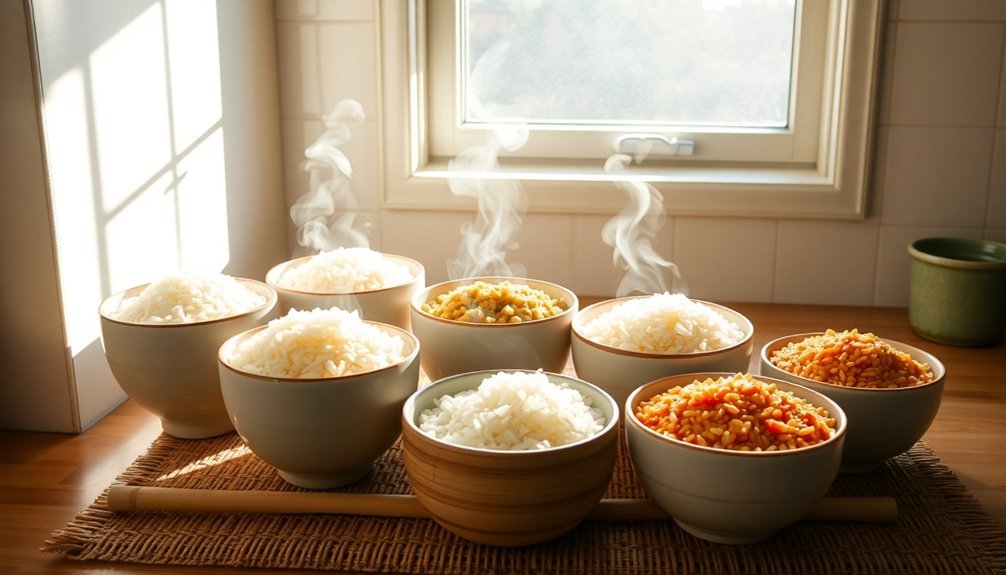
While solar cooking requires more patience than traditional methods, preparing rice with the power of the sun offers an eco-friendly and energy-efficient alternative.
You'll need a parabolic solar cooker like the SunGlobe and a heat-resistant pot with a tight-fitting lid. The absorption method works best for preparing rice in a solar oven. Place your setup in direct sunlight and secure it against wind.
For basic white rice, use a 1:1 ratio of rice to water, though you'll need extra water for solar cooking. Starting with hot tap water can speed up the process.
Position your covered pot in the preheated solar oven and cook for 20-40 minutes, depending on quantity. Look for small holes on the surface indicating water absorption. Once done, let it rest for 10 minutes.
If you're cooking larger portions, plan for 6-7 hours of bright sunlight.
Solar Batch Cooking Method
Building on the basics of solar rice cooking, you can maximize your sun-powered setup by preparing larger batches at once. Using a parabolic solar cooker like the SunGlobe, you'll need to maintain a 1:1 water-to-rice ratio, adding extra water to compensate for slower solar heating. Adding thyme and rosemary enhances the flavor profile significantly.
| Time & Setup | Requirements | Results |
|---|---|---|
| 20-30 mins | Basic steamed rice | Small holes indicate completion |
| 60 mins | Tomato sauce recipes | Two 30-min segments with rotation |
| 6-7 hours | Extended cooking | Best for large batches |
Position your covered pot for maximum sunlight exposure and adjust the angle periodically. You'll know your rice is ready when you see small holes on the surface. Let it rest for 10 minutes after cooking to finish with residual steam.
One-Pot Solar Rice
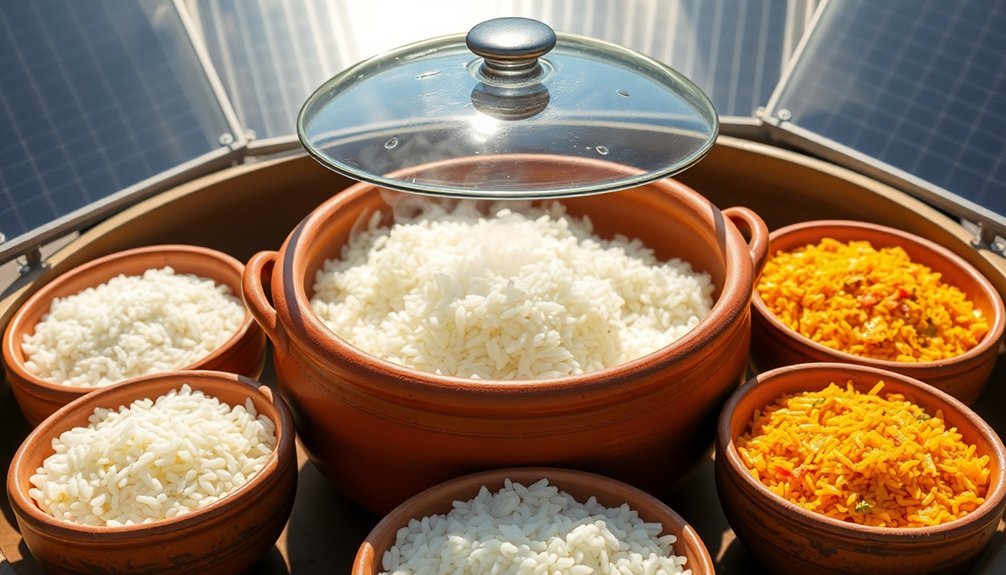
Since solar cooking simplifies meal preparation, one-pot rice offers an ideal entry point for beginners. You'll need 1 cup of rice and 1-1.25 parts water, with long-grain varieties like basmati or jasmine working best. Start with hot tap water to jumpstart the cooking process and guarantee even results. For optimal results, choose a day with clear skies and warm temperatures.
- Place your rice and water in a covered pot, guaranteeing there's enough liquid for proper absorption.
- Position the pot in your solar cooker, allowing 6-7 hours for traditional solar ovens or 20-30 minutes for parabolic cookers.
- Watch for small holes forming on the surface, indicating the water has been absorbed.
- Remove from heat and let rest for 10 minutes, allowing the steam to complete the cooking process.
Don't rinse after cooking; simply fluff and serve your perfectly cooked solar rice.
Slow Cook Solar Rice
As the sun powers your solar cooker throughout the day, slow-cooked rice delivers exceptional results with minimal effort. You'll need to use less water than traditional methods – for jasmine rice, stick to 1 cup rice per 1⅔ cups water. Pre-heat your solar oven for 20-30 minutes before starting. The recipe yields 3 to 4 cups when fully cooked.
| Time | Temperature | Action |
|---|---|---|
| 0 min | 275°F+ | Add rice and water |
| 30 min | Check temp | Reorient cooker |
| 1 hour | Check temp | Quick stir |
| 1.5 hours | Check temp | Test rice |
| 2 hours | Off | Let rest |
Use black granite-ware pots for better heat retention, and monitor your cooker's orientation throughout the day. Remember, solar cooking works like a crockpot – it's slower but yields perfectly cooked rice when you maintain proper temperature and liquid ratios.
Bulk Rice Solar Storage
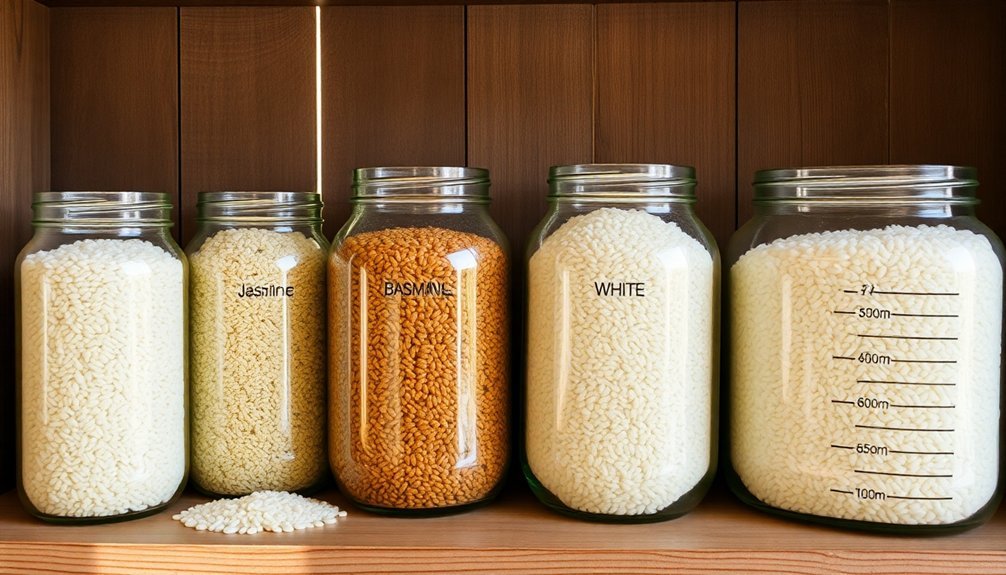
While solar cooking rice offers great results, solar technology can also revolutionize how you store bulk rice.
You'll find that modern solar-powered storage systems, like the GrainSafeTM Dry, combine drying and storage functions to keep your rice in perfect condition. These innovative systems use solar-powered blowers to maintain ideal humidity levels while protecting your rice from insects and moisture.
- Store between 1-5 tons of rice in hermetic conditions that prevent water absorption
- Let the solar-powered blower automatically adjust to humidity changes
- Trust the rolling bar mechanism to guarantee even drying throughout your stored rice
- Save money with a system that costs around $1,100, making it accessible for bulk storage
The combination of solar drying and hermetic storage gives you a sustainable, efficient way to maintain your rice's quality long-term.
Frequently Asked Questions
Why Does My Rice Become Sticky Even When Following the Correct Water Ratio?
Your rice becomes sticky when you don't rinse it properly, cook it too long, or skip the resting period. Remember, excess starch and improper cooking techniques are usually the culprits, not just water ratio.
Can I Cook Different Types of Rice Together in the Same Pot?
You shouldn't cook different rice types together in one pot. They have varying cooking times and water requirements. Instead, cook them separately and combine afterward to guarantee proper texture and doneness.
How Do I Prevent Rice From Sticking to the Bottom of the Pot?
You'll prevent rice from sticking by rinsing it thoroughly, adding oil to coat the pot's bottom, using the right water ratio, and reducing heat once it simmers. Don't forget to let it rest after cooking.
Is It Safe to Reheat Rice Multiple Times After Cooking?
You shouldn't reheat rice more than once, as it increases the risk of food poisoning. If you've stored it properly below 8°C and reheat it thoroughly to 165°F, one reheat is safe.
What Causes Rice to Become Mushy and How Can I Prevent It?
Your rice becomes mushy from too much water, incorrect ratios, or overcooking. You'll prevent this by washing rice first, using proper water measurements, and monitoring cooking time. Don't let it cook too long.
In Summary
You'll find solar rice cooking offers a sustainable and energy-efficient way to prepare this staple grain. Whether you're using a solar cooker for single batches, one-pot meals, or slow-cooking methods, you've got options to harness the sun's power. Don't forget to properly store your bulk rice in solar-dried containers. With these five methods, you're ready to cook rice sustainably while saving energy and money.

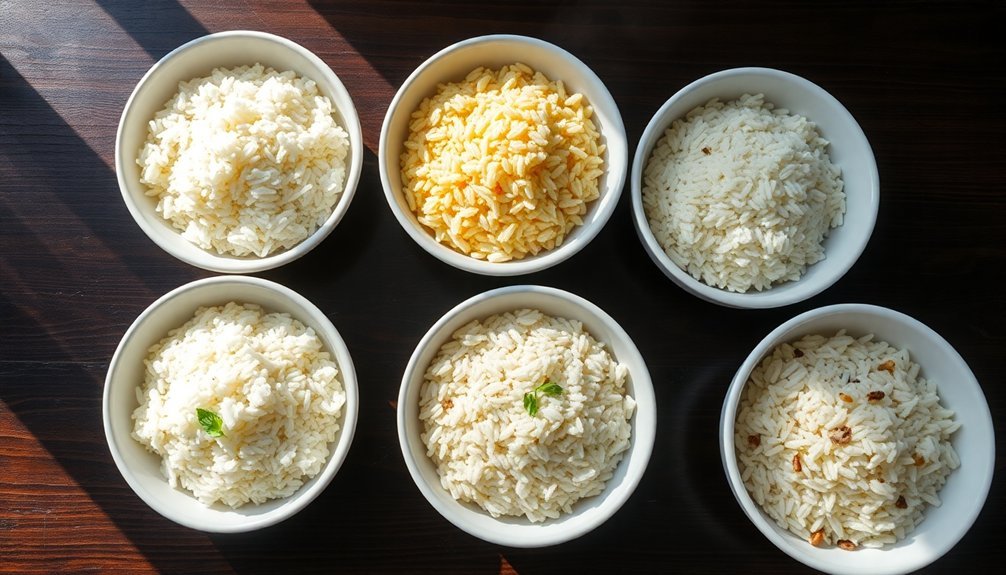
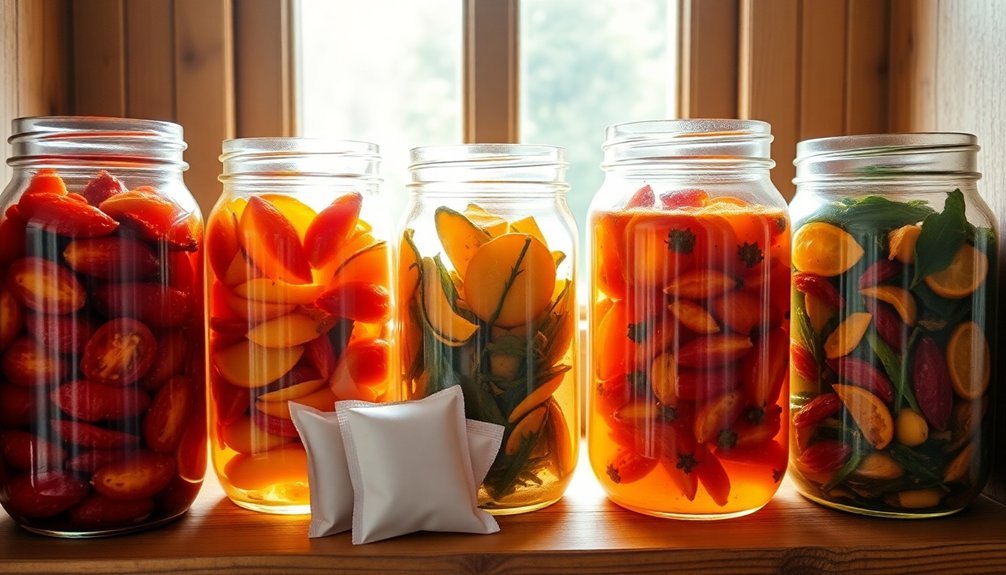
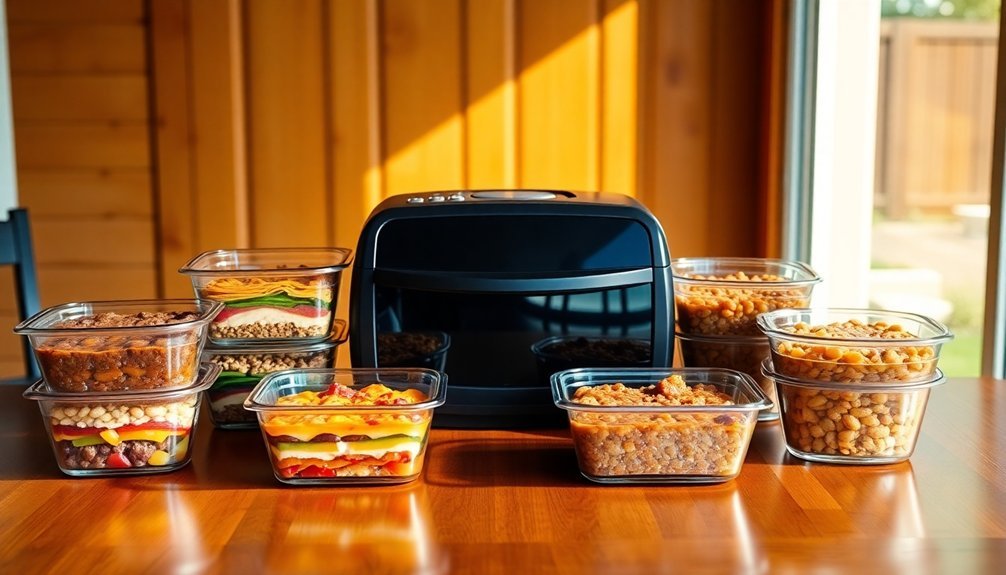
Leave a Reply